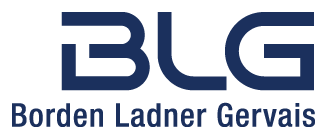On January 30, 2015, the Office of the Superintendent of Financial Institutions (OSFI) published the final version of Guideline B-7 - Derivatives Sound Practices (the Guideline), replacing the 1995 Guideline B-7 - Derivatives Best Practices. Although the final version of the guideline was only just recently released, the Guideline came into effect on November 1, 2014 following the release of the draft of the Guideline issued on October 1, 2014. The draft of the Guideline, which included updates to reflect the over-the-counter (OTC) derivatives market reforms initiated by G-20 leaders, reflects OSFI’s expectations for central clearing of standardized OTC derivatives and reporting derivatives data to a trade repository.
The Guideline became effective before it was published in final form in order to coincide with the timing of the provincial derivatives data reporting requirements coming into effect. Reference in the Guideline is made to rules promulgated by other regulators, including provincial securities regulators, which are considered to be applicable to federally-regulated financial institutions (FRFIs) by virtue of the Guideline. OSFI has stated that it will monitor FRFIs’ compliance with these requirements.
The draft of the Guideline also addresses current best practices with respect to the risk management of derivatives activities. A summary of the sound practices set out in the Guideline can be found in our previous client bulletin dated October 9, 2014, Derivatives Sound Practices – Draft Guideline Released for Federally- Regulated Financial Institutions in Canada.
In the final form of the Guideline, OSFI articulates its finalized expectations for risk management processes related to derivatives activities, specifically, the management of market risk, credit risk, liquidity risk and operational risk. Accordingly, it should be reviewed and implemented by FRFIs, their subsidiaries, and the Canadian branch operations of foreign institutions that engage in derivatives activities. How a FRFI applies the risk management practices in the Guideline will depend on the nature, size and complexity of its derivatives activities.
The final Guideline addresses material comments received in the public consultation process that started in October 2014. In particular, OSFI clarified the following points in the Guideline:
- OSFI recognizes that dealers and active position takers would generally require more sophisticated models to calculate valuation adjustments than end-users of derivatives;
- FRFIs that act as both end-users and dealers will be held to a higher standard than FRFIs that use derivatives exclusively as end-users of derivatives;
- OSFI reiterates that all material terms should be agreed to in writing by FRFIs prior to or at the time of execution of a non-centrally cleared derivative, as a similar requirement for non-FRFIs may be considered in the future;
- The identification and assessment of inherent operational risk is only relevant for derivatives products, activities, processes or systems that are material to a FRFI;
- Because portfolio compression may not be feasible for certain end-users (i.e. those with low volumes or mostly directional trades), the requirement to engage in portfolio compression is only applicable where appropriate; and
- OSFI acknowledges that a FRFI cannot compel counterparties to reconcile portfolios and hence, the requirement to engage in portfolio reconciliation only applies to uncleared derivatives.
In responding to a comment requesting greater clarity on netting and margining expectations, OSFI indicated that it plans on introducing new guidance to establish initial and variation margin requirements for non-centrally cleared derivatives. This new guidance will stem from an international policy framework and will be applicable to FRFIs. OSFI expects to communicate further on this topic sometime this year.
OSFI also continues to monitor the development of mandatory central clearing rules by other regulators. In order to ensure a level playing field for all counterparties, OSFI will consider aligning OSFI guidance with requirements in different jurisdictions.




